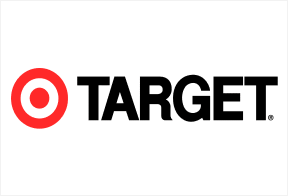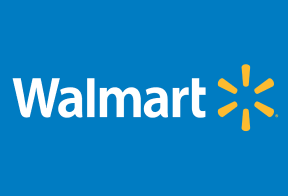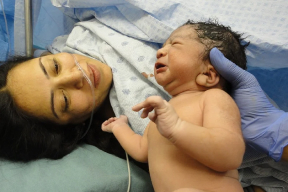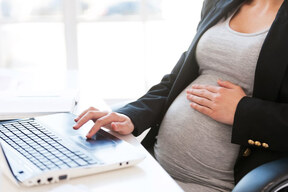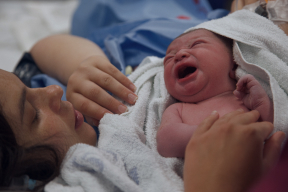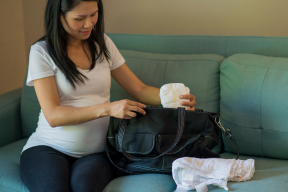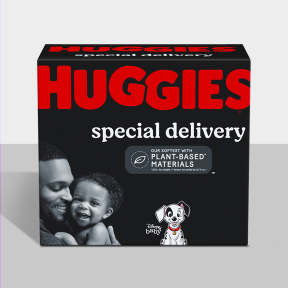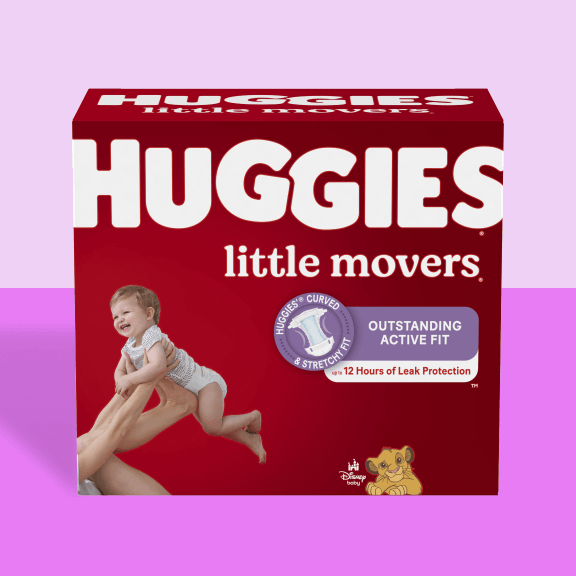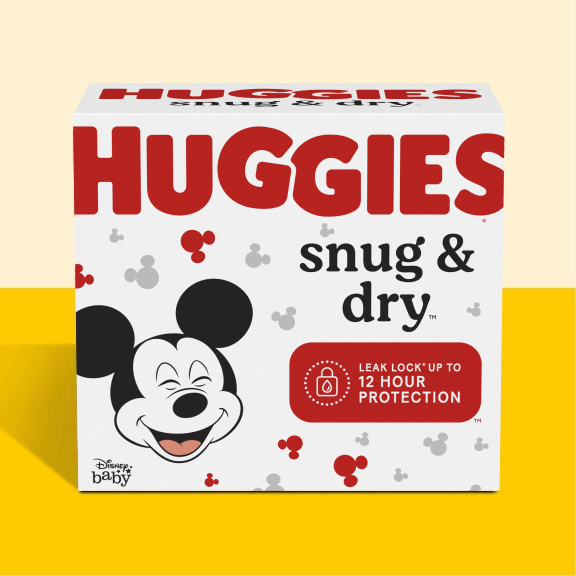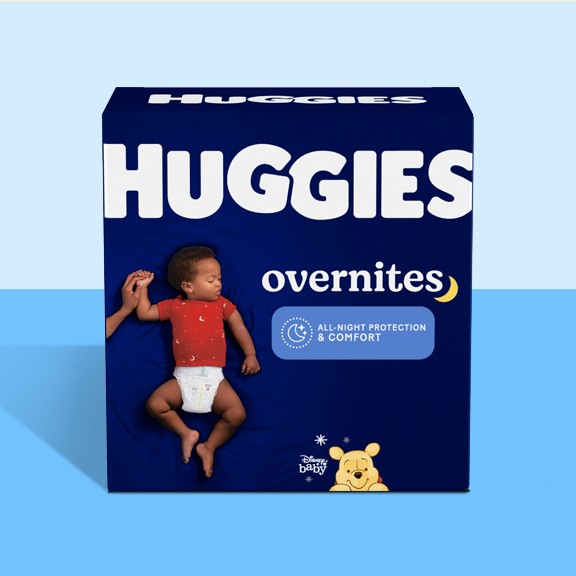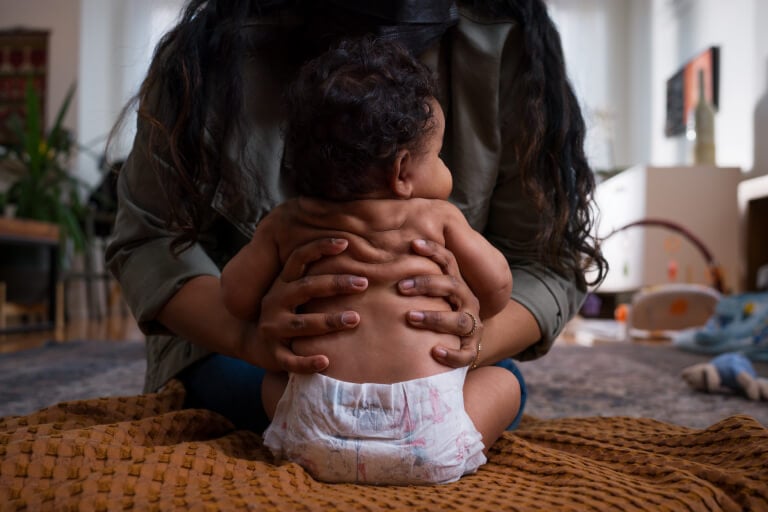The ultimate baby registry checklist
Diapering
Feeding
Nursing
Bathing
Playing
Sleeping
Gear
The 30 items you need on your baby registry

Huggies® Diapers: Our diapers are perfect for newborns, thanks to their soft, fast-absorbing liners and wetness indicators. Check out our diaper calculator to know how many diapers you’ll need.

Huggies® Wipes: You’ll need to have plenty of wipes on your registry and the best thing about wipes—your baby will never outgrow them!

Changing pads: There are two types of changing pads — fabric-covered and silicone. Fabric-covered changing pads allow you to remove the cover and throw it in the wash; a silicone changing pad wipes down.

Diaper disposal system: A diaper pail is a trash can specifically made for disposing of diapers. They may work with special diaper trash bags, designed to help mask the scent of a dirty diaper.

Diaper bag: Pick a diaper bag that suits your lifestyle and consult your partner if they will be using it as well. Choose one that has several pockets, compartments or zippered bags so you can stay organized. Look for one that is machine washable or wipes down easily.

Bottles and nipples: You’ll need bottles and nipples if you are pumping or formula feeding. You’ll need slow flow nipples for newborns. Don’t forget the bottle brush and drying rack for cleaning.

Solid feeding items: Plates, utensils, cups, sippy cups, bowls—you’ll eventually need them all for your baby once they starts experimenting with solid food.

Burp cloths: You’ll need quite a few burp cloths stashed around the house and in the diaper bag.

Bibs: You might have a very easy baby who only needs a bib while feeding, or you might get a baby who spits up frequently. They come in styles that slip on over the head, that velcro, and that snap.

Postpartum supplies: It’s a good idea to have postpartum supplies on hand, such as peri bottles, ice packs, disposable adult diapers, mesh underwear, nipple shields, nursing bras and more.

Nursing supplies: If you are nursing, a nursing pillow can help hold your baby up, which makes it more comfortable for you both. Many nursing pillows can also be used for tummy time and teaching your baby to sit up.

Baby bathtub: There are several kinds of tubs to choose from, including those that go into a regular bathtub and those that go into a sink.

Baby towels and washcloths: You can use a regular towel when bathing your baby, but a baby-specific towel is smaller and softer—and it usually comes in cute patterns and shapes. Some styles are even hooded with animal ears on them.

Floor mat: A baby floor mat is a place for a parent to lay the baby down (before they start rolling and crawling), for a baby to look at objects and toys, and for a baby to get in tummy time.

Books: Board books are appropriate for ages 0-4 years old. There are also soft and squishy books that are more of a sensory experience for newborns. Don’t forget, there are several parenting books that could help with navigating the first year.

Crib: You might want to put your baby in a bassinet at first, but eventually you’ll need a safe crib for your baby to sleep in until he or she is a toddler. Choose a new crib rather than used and make sure to have the crib put together and installed in case your baby comes early.

Crib mattress: A baby needs a very firm mattress to sleep on for safety reasons. Crib mattresses are designed to fit a standard crib and to help keep your baby safe. Many models are dual-sided and come with a toddler side that you can flip it to when the baby is older.

Crib sheets and mattress pads: You’ll need mattress pads to stop any leaks or blowouts from getting through to your crib mattress. You should also register for several sets of crib sheets. Babies are messy, and depending on your child, you may be changing sheets often.

Pacifiers: Also known as soothers, binkies and dummies, pacifiers help calm a fussy baby. You’ll want a few on hand of whichever style and brand you choose, plus pacifier clips to keep them in place.

Noise machine: Sound machines have a variety of noises, such as classic white noise, music, ocean waves and more. You can even register for a portable one for on-the-go naps.

Swaddles and sleep sacks: A swaddle is a blanket that can help calm your newborn or help them sleep. Some styles have velcro tabs to make swaddling easier. Sleep sacks are essentially wearable blankets.

Stroller: There are strollers that have different snap-in compartments for different stages of your baby’s life, double strollers, jogging strollers and more to choose from.

Car seat: You have many car seat options, including ones specifically made for infants that have click-in bases to make getting the seat in and out of the car a cinch. You can also get a car seat that is convertible, which means it will grow with your baby.

Baby carrier: Baby carriers allow parents to have their hands free. You could register for a few different types, such as a sling carrier, a fabric carrier, a soft structured carrier or a harness carrier.

Baby swing: A baby swing is a place for fussy babies to hang out and get soothed, and it’s a way for parents to have their hands free to do household tasks or just take a break. They come in several styles, many with music and mobiles.

Glider or rocker: A new parent will spend a lot of time in a rocker or glider chair, so pick one that is both stylish and comfortable. A rocker rocks back and forth, and a glider can rock back and forth and swivel. Some come with ottomans to have a place to rest your feet.

Monitor: There are both physical monitors and WiFi-enabled monitors you can see on your phone, and a combination of the two. You can find monitors that mount to the wall, mount to the crib or that can be put on a shelf.

Health kit: Your baby will need some basic healthcare items, such as a thermometer, nail clippers, a bulb syringe, a first aid kit and basic medicines, like acetaminophen. Register for these individually or buy them in a single kit.

High chair: Even though it seems like forever away, your baby will soon need a high chair to sit in for meals. Most babies start eating solids somewhere around four to six months when they can hold their heads up.

Clothes: Depending on the time of year, your baby’s wardrobe needs may vary. Make sure to register for an assortment of sizes, including newborn and 0-3, since you won’t know how big your baby is until they are born.
Add Huggies to your list!
Don’t forget to download your registry checklist to share with your friends and family!

